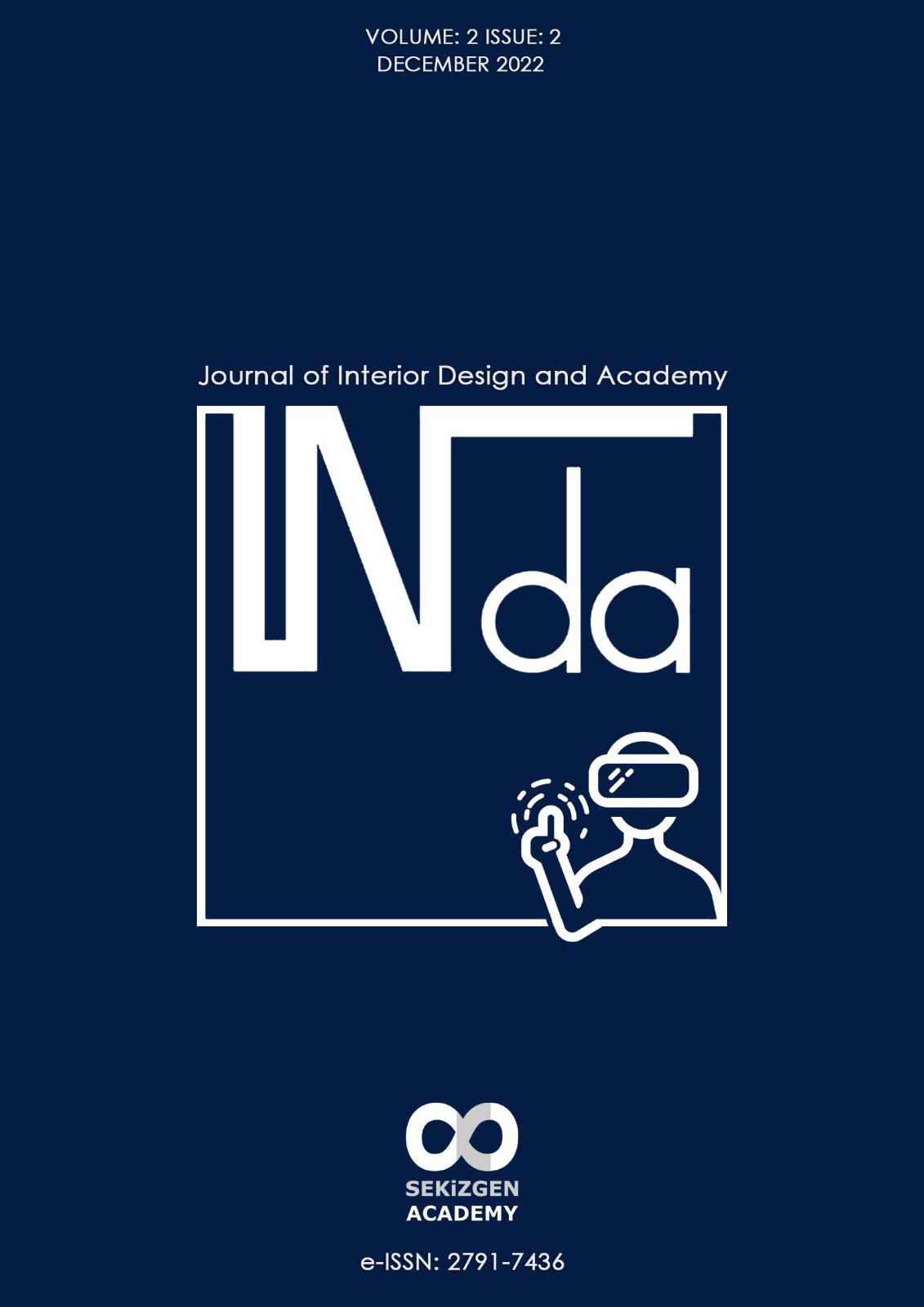Size-Dependent Change of the Items that Define the Space In Game Spaces: It Takes Two Example
DOI:
https://doi.org/10.53463/inda.20220108Keywords:
Fictional space, game based learning, perception of place, scale, spatial dimensionAbstract
In order for the space to be meaningful and defined, users need to perceive the spaces they are in and are in constant interaction with their knowledge and experience through their senses. There is an relationship between the definition of space and the organizational systems of space. Creating places by designing a space is one of the tasks of the designer. In the design education process, it is important to meet the needs of the user and the requirements of the space by making the necessary space arrangements in line with the needs of the user. Game based learning provides designers with the opportunity to gain this experience in fictional spaces in cases where they do not have the opportunity to experience a concept. In addition to the user experience, it is also possible for the players to experience the concepts such as ratio, scale, color, rhythm, balance, harmony and order, which are the basis of any design. Fictional spaces and especially game places can be used as teaching materials in the disciplines of architecture and interior architecture as they allow the player to make their own decisions and to experience the space completely
Downloads
References
Alaswad, Z., ve Nadolny, L. (2015). Designing for game-based learning: the effective integration of technology to support learning. Journal of Educational Technology Systems, 4(43), 389-402. doi:10.1177/0047239515588164
Aslan, F. , Aslan, E. ve Atik, A. (2015). İç mekanda algı. İnönü Üniversitesi Sanat ve Tasarım Dergisi , 5 (11) , Erişim adresi: https://dergipark.org.tr/tr/pub/iujad/issue/8730/614922
Ayalp, N. (2012). Cultural identity and place identity in house environment: Traditional Turkish house interiors.V. Niola ve Ka-Lok Ng (Yay. haz.), Recent Researches In Chemistry, Biology, Environment And Culture, Proceedings of the 2nd International Conference on Arts and Culture (ICAC '11) (s. 64-69) içinde. Montreux, Switzerland. Erişim Adresi: https://api.semanticscholar.org/CorpusID:171090780
Ching F. D. K. (2007). Form defining space. Architecture : form space and order (3rd ed.) 1st edition:1943 (s.110-182). Amerika Birleşik Devletleri: John Wiley and Sons,
Cross, J. E. (2001, Kasım). What is sense of place? 12th Headwaters Konferansı. Western State College, Gunnison, Amerika. Erişim Adresi: https://mountainscholar.org/bitstream/handle/10217/180311/FACFSOLO_Cross_2001_Headwaters%20XII_Sense%20of%20Place.pdf?sequence=4
Davies, H. (2007). Place as media in pervasive games. IE '07: Proceedings of the 4th Australasian conference on Interactive entertainment, Erişim adresi:https://www.academia.edu/9655602/Place_as_Media_in_Pervasive_Games?source=swp_share
Demirbaş, O. O. (2008). An experiential learning journey: basic design studio. designing design education, Designtrain Congress, Amsterdam, Holland. Erişim Adresi: https://www.researchgate.net/publication/237228976_AN_EXPERIENTIAL_LEARNING_JOURNEY_BASIC_DESIGN_STUDIO
Ehn, P. (1988). Work-oriented design of computer artifacts. Stockholm, Sweden: Gummessons.
Electronic Arts (Yayıncı) ve Hazelight Studios (Geliştirici) (2021). It Takes Two. İsveç: Hazelight
Göler, S. (2009). Biçim, renk, malzeme, doku ve ışığın mekân algısına etkisi. (Yüksek Lisans Tezi, Mimar Sinan Güzel Sanatlar Üniversitesi, İstanbul) Erişim Adresi: https://tez.yok.gov.tr/UlusalTezMerkezi/tezDetay.jsp?id=EU7TRZBmzF02pEl8_AwWEA&no=Tbn5ITJ50jCkEJhzkKhb7
Gulec Solak, S. S. (2017). Mekân-kimlik etkileşimi: Kavramsal ve kuramsal bir bakış space-identity interaction: a conceptual and theoretical overview . MANAS Sosyal Araştırmalar Dergisi , 6 (1) , 13-37 . Erişim Adresi: https://dergipark.org.tr/tr/pub/mjss/issue/40509/485519
Heineman D., S. (2016). “Bound” is a Beautiful Game about Ugliness. Erişim adresi: https://medium.com/@DrHeineman/bound-is-a-beautiful-game-about-ugliness-339d7492798
Koçyiğit, R. G. & Gorbon, F. (2016). Mimarlıkta yersizleşme ve yerin-yeniden üretimi . Tasarım + Kuram , 8 (13) , 95-113 . DOI: 10.23835/tasarimkuram.240897
Malmgren, C. (1985). Fictional space in the modernist and post-modernist American novel. Pensilvanya, USA: Bucknell University Press.
Marlow, Cr. (2009). Games & learning in landscape architecture. 10th International Conference on Information Technologies in Landscape Architecture – Digital Landscape Architecture 2009, Valletta, Malta. Erişim Adresi: https://www.researchgate.net/publication/239920443_Games_Learning_in_Landscape_Architecture
Özdemir, İ. (1994) Mimari mekânın değerlendirilmesinde mekân örgütlenmesi kavramı, konutta yaşama mekânları (Doktora Tezi, Karadeniz Teknik Üniversitesi, Trabzon), Erişim Adresi: https://tez.yok.gov.tr/UlusalTezMerkezi/tezDetay.jsp?id=hIMz7hX-saadtQbCfFC7SA&no=hIMz7hX-saadtQbCfFC7SA
Pivee, M., Dziabenko, O., ve Schinnerl, I. (2003). Aspects of game-based learning. Proceedings of I-KNOW ’03 (s. 216-225) içinde. Austria. Erişim Adresi: https://www.academia.edu/2376082/Aspects_of_game_based_learning
Playstation (2021, 6 Kasım). Games, Sony Interactive Entertainment Europe Limited. Erişim adresi: https://www.playstation.com/en-tr/games/indies/?smcid=pdc%3Aen-tr%3Aps5-games%3Aprimary%20nav%3Amsg-games%3Aplaystation-indies
Relph, E. (1976). Place and placelessness. London: Pion.
Ronen, R. (1986). Space in fiction. Poetics Today, 7(3), 421–438. https://doi.org/10.2307/1772504
Salama, A. M. (2005). A process oriented design pedagogy: KFUPM sophomore studio. CEBE Transactions, 2(2), 16-31. DOI:10.11120/tran.2005.02020016
Sarıoğlu Erdoğdu, G. P. (2016). Temel tasarım eğitimi: bir ders planı örneği. Planlama, 26(1), 7-19. doi: 10.5505/planlama.2016.52714
Stenros, A. (1993). Orientation, identification, representation - space and perception in architecture. The first EAEA (European Architectural Endoscopy Association) Conference (s. 169-196) içinde. Tampere, Finland. Erişim Adresi: http://cumincad.scix.net/data/works/att/275e.content.pdf
Steele, F. (1981). The sense of Place. Boston, Mass.: CBI Pub. Co.
The Game Awards. (2021, 9 Aralık). The Game Awards 2021. Erişim adresi: .https://thegameawards.com/nominees
Worth, S. E. (2004). Fictional spaces. The Philosophical Forum, 35(4), 439–455. https://doi.org/10.1111/J.0031-806X.2004.00184.X
Zendehdelan, A., Pouyanfar, E., & Ahmad, H. (2013). The perception of the sense of place in public spaces’ quality through the five senses: Case study of Naqsh-e-Jahan square, Isfahan, Iran. Journal of Basic and Applied Scientific Research, 3(2), 1012-1020. Erişim adresi: https://www.textroad.com/pdf/JBASR/J.%20Basic.%20Appl.%20Sci.%20Res.,%203(2)1012-1020,%202013.pdf
Downloads
Published
How to Cite
Issue
Section
License
Copyright (c) 2022 Sekizgen Academy

This work is licensed under a Creative Commons Attribution-NonCommercial-ShareAlike 4.0 International License.




















